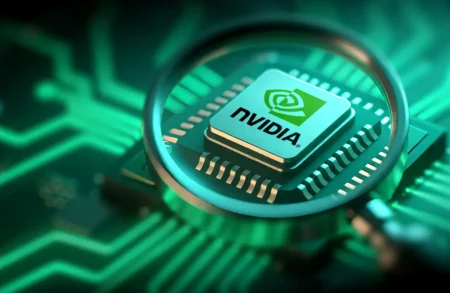Intel shares climbed more than 7% on Tuesday after the chipmaker announced it would cut hundreds of jobs. This move is part of a larger restructuring plan aimed at improving the company’s performance and cutting costs.
The stock closed at $23.59, its highest level since late March, and was the biggest gainer in the Nasdaq 100 on the day. So far this year, Intel shares have gained 18%, helped by hopes for a turnaround under new CEO Lip-Bu Tan and talk of possible deals, including the sale of parts of the company.
Despite recent gains, Intel has lost nearly one-third of its value over the past 12 months. The company has struggled to keep up with rivals in the growing AI chip market and has faced ongoing doubts about its long-term strategy.
Tuesday’s rally came as traders reacted to both the job cuts and a key technical breakout in the stock’s chart. Analysts say this combination could lead to more gains in the near term, depending on how the stock reacts at key price levels.
Intel shares broke out of a flag pattern on Tuesday. This chart setup often appears after a brief pause in a rising trend and usually points to more gains ahead. Before the breakout, the stock had reclaimed its 200-day moving average, a key signal of strength. The breakout above this flag pattern shows strong momentum and may lead to further gains.
The Relative Strength Index, a tool that measures how strong a price move is, supports this trend. It shows upward momentum without reaching levels that suggest the stock is overbought. This leaves room for more growth if interest stays high.
Investors are now keeping a close eye on the $26 price level. This area has acted as strong resistance in the past, with multiple peaks in November, February, and March. The pattern target from the recent breakout also points to this zone. If the stock can break above $26 with strong demand, the next target could be around $30.
Some investors who bought shares during Intel’s sideways trading in previous months might choose to sell around $30 to lock in gains. This could lead to some selling pressure near that level.
On the downside, the $22 level is now seen as an important support. This area matches the 200-day moving average and a trendline that has supported the stock since August of last year. If Intel pulls back, this zone could attract new buyers and help hold the stock steady.
The job cuts are just one part of Intel’s broader plan to improve results and cut spending. The company is also considering selling smaller parts of the business that don’t fit its main chip-making goals. These changes are meant to help Intel compete better in key areas like artificial intelligence and data centers.
CEO Lip-Bu Tan, who was recently appointed, is under pressure to make quick progress. Investors want to see real results from the restructuring. They will be watching for updates on product plans, cost savings, and new deals in the months ahead.
For now, the market is reacting positively. The job cuts show that Intel is serious about making changes. The chart breakout has added to this optimism. But risks remain. Competition in the chip industry is fierce, and it will take time to know if Intel’s changes are enough.
Traders and investors will keep watching key levels on the chart. A strong move above $26 could lead to a rally toward $30. Holding above $22 would help confirm the breakout and build confidence.
The next few weeks will be key as Intel looks to prove that its turnaround efforts are working. While the path forward is not certain, the recent moves suggest that the company is starting to regain momentum in the eyes of investors.







